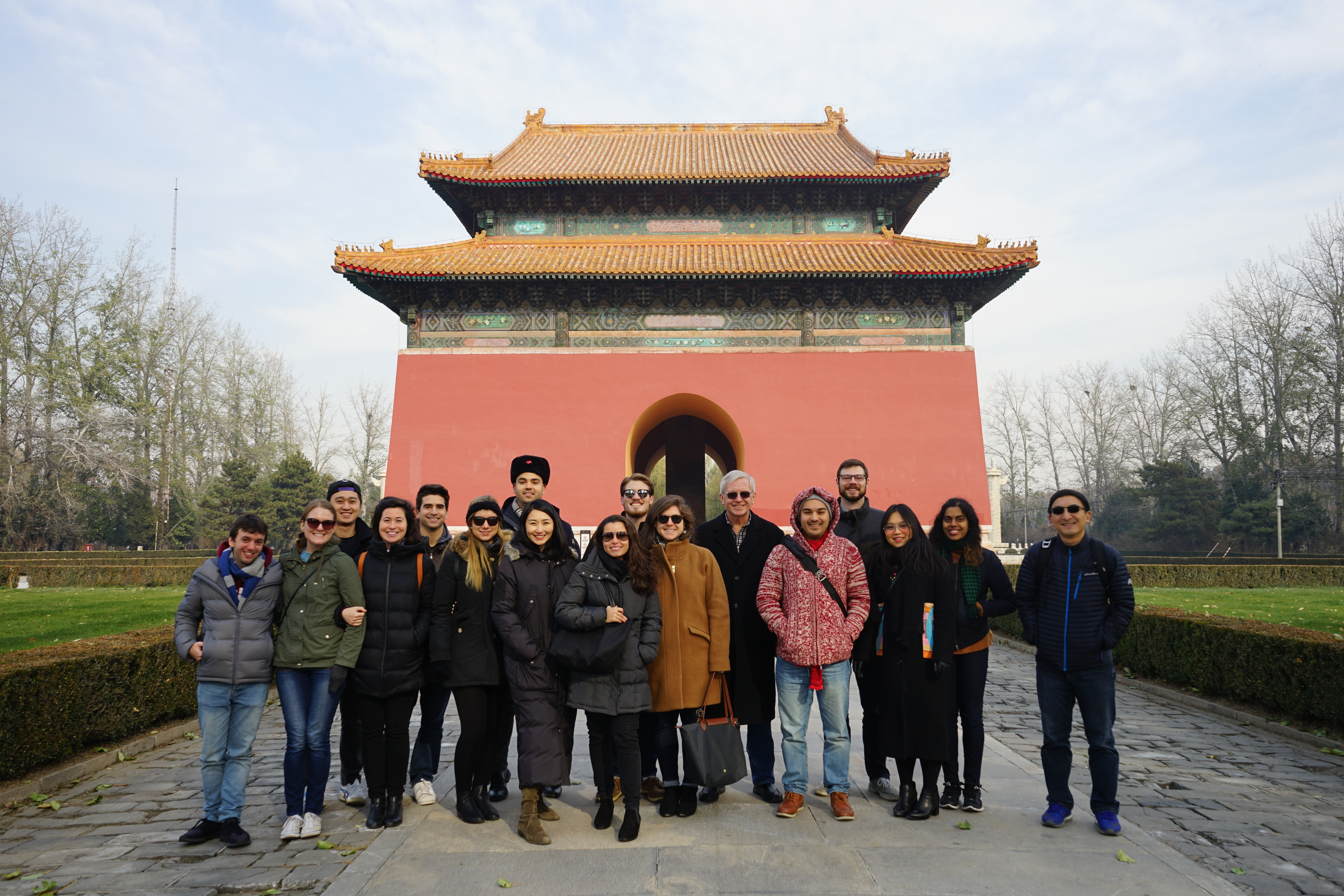Energy Tour of China

In late November, twenty students from SAIS Europe, the Hopkins-Nanjing Center, and the school’s Washington, DC campus participated in a study trek for an up-close look at energy transitions currently underway in China. The trip was conducted with the support of the China-United States Exchange Foundation. Themes included energy governance, renewable technology innovation, commercialization of renewables and new energy storage, and consumption and end-use efficiency. The students visited three Chinese cities, Beijing, Shenzhen and Shanghai, and explored a different theme in each. Hopkins-Nanjing Center (HNC) Professor Roger Raufer and Johns Hopkins SAIS Professor Rui Wang led the group.
Their trip started in Beijing, where the group visited the National Development and Reform Commission, Energy Research Institute, National Energy Administration, and the Ministry of Environmental Protection. The students also enjoyed an informal lunch discussion with a representative from the Paulson Institute.
Next, the group flew to the southern city of Shenzhen in Guangdong Province, China’s tech capital, to learn more about innovation in the renewables field and met with the Shenzhen Energy Group, the Tsinghua-Berkeley-Shenzhen Institute, and BYD, which is a major manufacturer of electric vehicles.
Shanghai was next on their list—China’s manufacturing heartland, which is a major center of renewables commercialization. There they visited Trina Group, one of the world’s largest manufacturers of solar panels (and a major innovator in new energy storage,) as well as a power plant owned by Guodian, one of the largest utilities in the country. They also visited Nicobar, a small nuclear analytics and consulting firm, and the Shanghai Institutes for International Studies. The last trip was to Nanhui New City: a breathtakingly ambitious eco-town that the Chinese government has constructed from reclaimed land on China’s Pacific coast.
The students learned much about the opportunities occurring within China’s energy sphere during the trip. It was especially interesting for the students to see first-hand some of the pollution control technologies discussed in Professor Raufer’s class “Air Pollution and its Control” being implemented in Chinese power plants. The students who will take Professor Wang’s class in Washington on Sustainable Urban Planning this spring in DC, said they will also benefit greatly from the trip.
The main takeaway of the trip for most students was that China is in the process of transitioning to an energy system based around renewables, distributed storage, and smart grids. They have already developed and commercialized some truly impressive technologies, and are making progress toward implementing a national level emissions-trading platform that will make China a global leader on climate change. At the same time, the visit to the Guodian Changzhou coal-fired power plant underlined just how significant China’s coal industry still is, and how expansive renewable energy technology will have to be to replace such facilities.
As China continues to develop at a breakneck pace, study tours like this will be critically important for understanding the direction of clean energy transition around the globe.